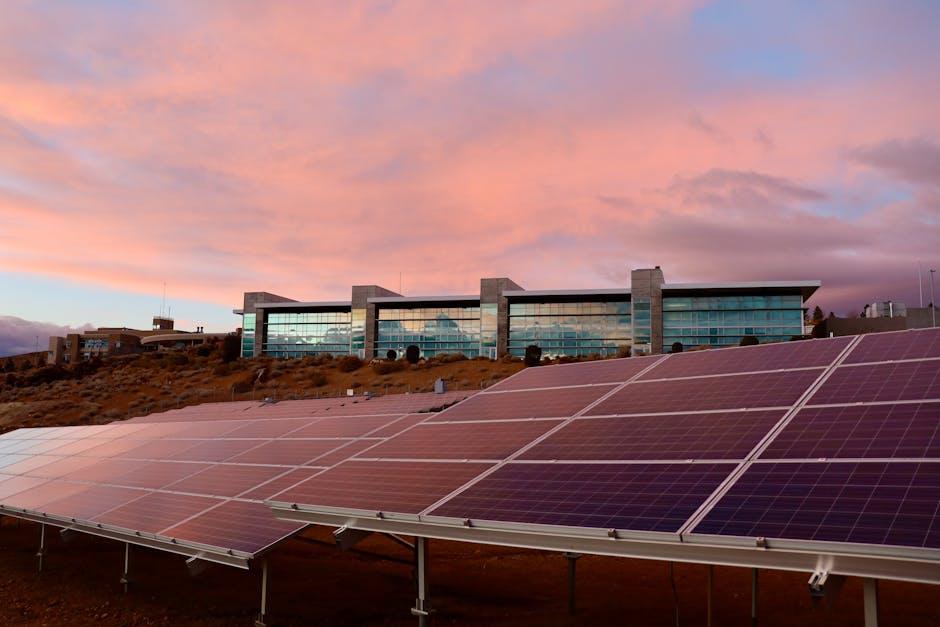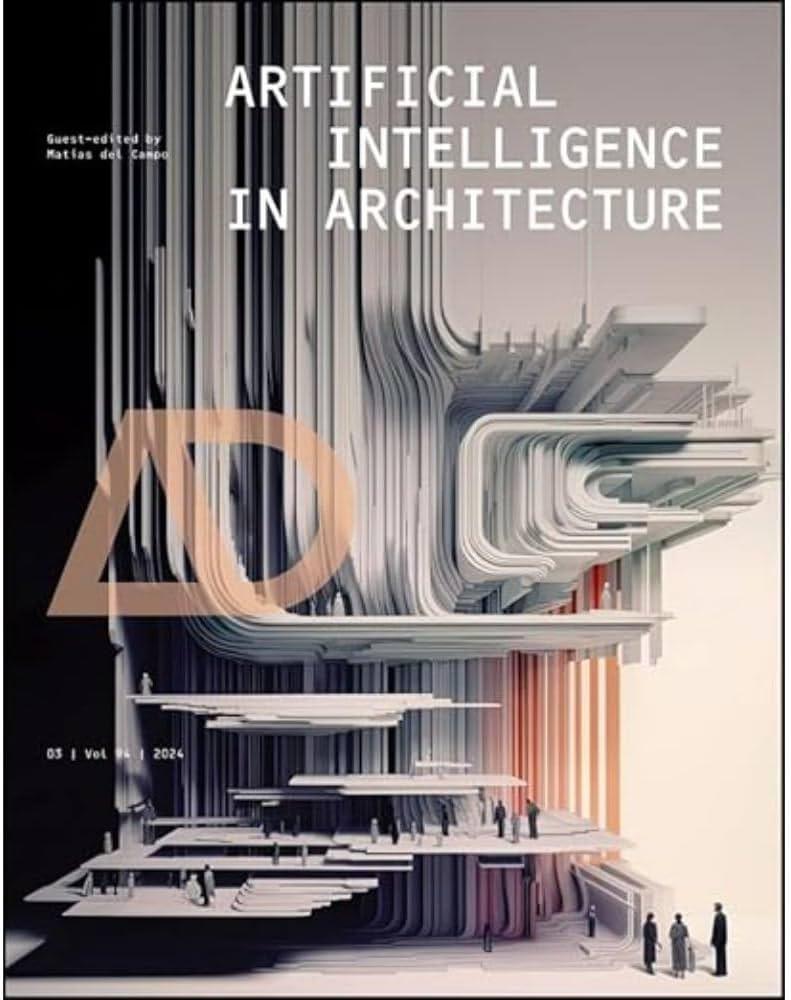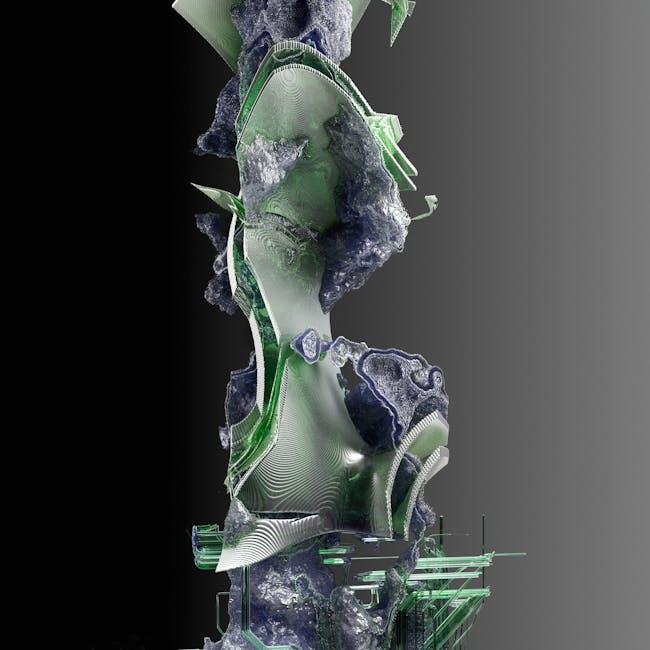
In the dynamic landscape of contemporary architecture, the fusion of innovative technology and visionary design is reshaping the way we construct and inhabit our built environments. Future by Design: Technology Empowering Modern Architecture delves into this transformative synergy, exploring how advancements such as artificial intelligence, sustainable materials, and smart infrastructure are not only enhancing aesthetic appeal but also addressing pressing challenges like urbanization and environmental sustainability. As architects and technologists collaborate to push the boundaries of what’s possible, this exploration highlights the pivotal role technology plays in crafting spaces that are not only functional and beautiful but also adaptable to the evolving needs of society.
Table of Contents
- Integrating Smart Systems for Enhanced Energy Efficiency
- Harnessing Artificial intelligence to Revolutionize Design Processes
- Leveraging 3D Printing and Modular Construction for Innovative Building
- Utilizing Virtual and Augmented Reality in Architectural Visualization
- Adopting Sustainable Technologies for Eco-Friendly Structures
- Implementing Internet of Things Solutions for Intelligent Building Management
- In Conclusion

integrating Smart Systems for Enhanced energy Efficiency
Integrating smart systems into modern architecture is revolutionizing the way buildings consume and conserve energy. By leveraging advanced technologies such as IoT (Internet of Things) sensors, automated climate control, and intelligent lighting systems, architects can design structures that respond dynamically to their habitat. These systems not only optimize energy usage but also enhance occupant comfort and reduce operational costs.
For instance, smart HVAC (Heating, Ventilation, and Air Conditioning) systems adjust temperature settings in real-time based on occupancy and external weather conditions. Similarly, adaptive lighting solutions can dim or brighten based on natural light availability and room usage patterns. The synergy between these smart technologies creates a holistic approach to energy management, ensuring that every aspect of the building operates efficiently.
| Smart System | Function | Energy Savings (%) |
|—————————|———————————————-|————————|
| IoT Sensors | Monitor environmental conditions | Up to 20% |
| Automated Climate Control | Adjusts heating and cooling dynamically | Up to 25% |
| Intelligent lighting | Optimizes lighting based on usage and daylight| Up to 30% |
| Smart Appliances | Manage power usage during peak hours | Up to 15% |
As illustrated in the table above, the integration of these smart systems can lead to significant energy savings, contributing to sustainable building practices.Beyond energy efficiency, these technologies provide valuable data analytics, enabling continuous enhancement and adaptation to evolving energy needs. Embracing smart systems is not just a trend but a essential shift towards intelligent, responsive, and sustainable architecture.
Harnessing Artificial Intelligence to Revolutionize Design Processes
in the realm of modern architecture, artificial intelligence is emerging as a pivotal force in transforming customary design methodologies.AI-driven tools enable architects to visualize complex structures with unparalleled precision, optimizing both aesthetic appeal and functional performance. By analyzing vast datasets, these intelligent systems can predict structural behaviors, simulate environmental impacts, and suggest innovative materials that enhance sustainability and resilience.
One of the most significant contributions of AI in design is its ability to facilitate generative design. This process allows architects to input specific parameters—such as spatial requirements, material constraints, and environmental considerations—and generate a multitude of design alternatives tailored to these criteria. The result is a diverse array of creative solutions that might not have been conceived through conventional design processes.Additionally, AI algorithms streamline collaboration by providing real-time feedback and facilitating seamless integration of multidisciplinary inputs.
| AI Submission | Benefit |
|————————–|————————————————–|
| Generative Design | Creates multiple design alternatives swiftly |
| Predictive Analytics | Anticipates structural and environmental impacts |
| Automated Drafting | Reduces time on routine drafting tasks |
| Material Optimization | Suggests sustainable and innovative materials |
| Intelligent Project Management | enhances collaboration and workflow efficiency |
Moreover, AI enhances the efficiency of the design workflow by automating routine tasks, thereby freeing architects to focus on more strategic and creative aspects of their projects. From automatic drafting and 3D modeling to intelligent project management,AI tools reduce the time and resources required to bring architectural visions to life. This not only accelerates project timelines but also ensures higher levels of precision and consistency across all stages of progress.
The integration of artificial intelligence in design processes heralds a new era of innovation in architecture. By leveraging the capabilities of AI, architects are empowered to push the boundaries of what is possible, creating structures that are not only visually stunning but also intelligently responsive to the dynamic needs of our modern world.
Leveraging 3D Printing and Modular Construction for Innovative Building
in the quest for architectural innovation, 3D printing and modular construction emerge as game-changers, redefining how structures are designed and built. 3D printing, or additive manufacturing, allows architects to materialize complex designs with unprecedented precision and versatility.From intricate facades to customizable interior elements, this technology breaks free from traditional construction limitations, enabling the realization of visionary concepts that were once deemed unachievable.
Simultaneously occurring, modular construction complements this by streamlining the building process through pre-fabricated components. By assembling buildings from standardized units produced off-site, architects and builders can significantly reduce construction time, minimize waste, and enhance quality control. The synergy between 3D printing and modular construction fosters a sustainable and efficient approach to modern architecture, where innovation meets practicality.
| Technology | Key Advantages | Applications |
|———————|———————————————-|—————————————|
| 3D Printing | complex geometries, reduced material waste, customization | Facades, interior elements, prototypes |
| Modular Construction | Faster assembly, cost-effective, scalability | Residential buildings, commercial spaces, temporary structures |
This integration not only accelerates the construction timeline but also adapts to the evolving needs of urban landscapes. As cities continue to expand and the demand for sustainable buildings rises, 3D printing and modular construction provide architects with the tools to create resilient, adaptable, and aesthetically compelling structures. Embracing these technologies paves the way for a future where architecture seamlessly blends creativity with technological advancement, ultimately shaping the skylines of tomorrow.
Utilizing Virtual and Augmented Reality in Architectural Visualization
In the realm of modern architecture, Virtual Reality (VR) and Augmented Reality (AR) have emerged as transformative tools, redefining how architects conceive, design, and present their visions. VR immerses clients and stakeholders in a fully digital environment, allowing them to explore spaces before they exist. This immersive experience facilitates better understanding of spatial relationships, lighting, and materiality, leading to more informed decision-making and enhanced collaborative creativity.
Augmented reality,on the other hand,overlays digital elements onto the real world,bridging the gap between concept and reality. Architects can use AR to visualize building components in their actual environment, making it easier to assess scale, context, and integration with existing structures. This technology not only improves accuracy in design but also enhances communication with clients, ensuring that the final outcome aligns closely with their expectations.
| Technology | key Features | Benefits |
|—————-|————————————–|———————————–|
| Virtual Reality | Full immersive environments | Enhanced spatial understanding |
| Augmented Reality | Overlay digital on real-world | Improved context visualization |
| Mixed Reality | Combines VR and AR elements | Seamless interaction with designs |
The integration of VR and AR into architectural workflows fosters innovation, enabling architects to push the boundaries of design while maintaining practical feasibility. as these technologies continue to evolve, their role in architectural visualization will undoubtedly expand, offering even more complex tools for creating the future built environment.
Adopting Sustainable Technologies for Eco-Friendly Structures
In the quest to harmonize modern architecture with environmental stewardship, adopting sustainable technologies has become paramount. These innovations not only minimize the ecological footprint of buildings but also enhance their efficiency and resilience. From energy-efficient systems to sustainable materials, the integration of these technologies transforms structures into models of eco-friendly excellence.
One significant advancement is the utilization of renewable energy sources, such as solar panels and wind turbines, which provide clean power and reduce dependence on fossil fuels. Additionally, smart building management systems optimize energy use by regulating heating, cooling, and lighting based on real-time data. Green roofs and walls further contribute by improving insulation, reducing urban heat islands, and promoting biodiversity.By embracing these sustainable technologies, architects and builders are paving the way for a greener, more sustainable future in construction.
| Technology | Benefits |
|————————-|—————————————————|
| Solar Panels | Generate renewable energy, reduce electricity costs |
| Green Roofs | Enhance insulation, support biodiversity |
| Smart Building Systems | Optimize energy use, improve occupant comfort |
| Recycled Building Materials | Lower environmental impact, promote circular economy |
| Energy-Efficient Windows| Reduce heat loss, lower heating and cooling needs |
The synergy of these technologies exemplifies how modern architecture can be both innovative and responsible. As the industry continues to evolve, the commitment to sustainability ensures that future structures will not only stand the test of time but also contribute positively to the planet.
Implementing Internet of Things Solutions for Intelligent Building management
As urban landscapes evolve, intelligent building management has become pivotal in creating spaces that are both efficient and responsive. The Internet of Things (IoT) serves as the backbone for this transformation, seamlessly integrating various systems to optimize building performance. By embedding sensors and connected devices throughout a structure, building managers can monitor and control everything from lighting and HVAC to security and energy usage in real-time.
One of the key advantages of IoT-driven building management is the ability to collect and analyze vast amounts of data. This data-driven approach enables predictive maintenance, reducing downtime and extending the lifespan of critical systems. additionally, it facilitates personalized environments for occupants, adjusting settings based on individual preferences and occupancy patterns. sustainability is also greatly enhanced, as IoT solutions help in minimizing energy wastage and promoting green building practices.
| IoT Solution | Function | Benefit |
|———————|——————————-|———————————-|
| Smart Sensors | Monitor temperature, light | Optimize energy usage |
| Automated Lighting | Adjust lighting based on usage| Reduce electricity consumption |
| HVAC Control Systems| Regulate heating and cooling | Enhance comfort and efficiency |
| Security Devices | Surveillance and access control| Improve safety and protection |
| Energy Meters | Track energy consumption | Identify and reduce waste |
Implementing these IoT solutions not only streamlines building operations but also paves the way for smarter, more adaptive environments. As technology continues to advance, the integration of IoT in building management will undoubtedly play a critical role in shaping the future of modern architecture, making structures smarter, more sustainable, and highly responsive to the needs of their inhabitants.
to sum up
As we stand on the brink of architectural innovation, the seamless integration of cutting-edge technology continues to redefine the skylines of our cities and the spaces we inhabit. From sustainable materials and smart building systems to advanced design software and modular construction techniques, technology not only enhances the aesthetic and functional aspects of modern architecture but also paves the way for a more resilient and adaptable built environment. Embracing these advancements, architects and designers are equipped to transform visionary concepts into tangible realities, ensuring that the structures of tomorrow are as dynamic and forward-thinking as the technologies that empower them. In this harmonious dance between creativity and innovation,the future of architecture promises to be as inspiring as it is groundbreaking.





















